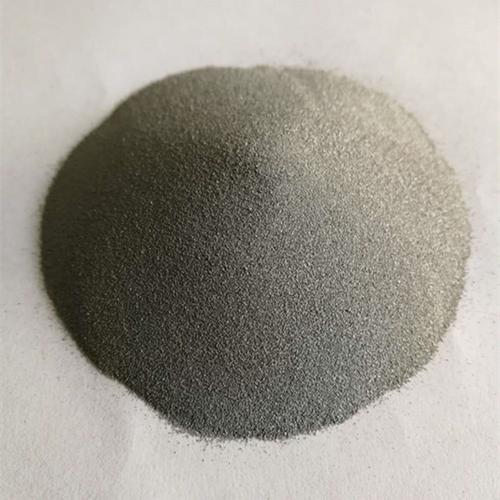**Fire Meets Metal: The Hot Chemistry Behind Aluminum and Phosphorus**
(What Is The Formula Of The Predicted Product From Heating Aluminum Metal And Powdered Phosphorus?)
Ever wonder what happens when you mix aluminum metal with powdered phosphorus and crank up the heat? It’s not just a flashy light show. This intense reaction cooks up something specific: aluminum phosphide. This compound is more than just a lab curiosity. Let’s dive into the fiery world of this reaction.
**1. What Is Aluminum Phosphide?**
Aluminum phosphide is the main chemical produced when aluminum metal reacts with red phosphorus under high heat. Its chemical formula is AlP. Imagine aluminum atoms and phosphorus atoms linking up. Each aluminum atom bonds with one phosphorus atom. This creates a solid, often grayish-dark or yellow-gray crystal. It doesn’t smell like much. Don’t be fooled by its simple look. Aluminum phosphide packs a serious punch. It’s famous for one key property. It reacts fiercely with water. This reaction releases a very toxic gas. This gas is phosphine (PH₃). That phosphine gas is why aluminum phosphide is so widely used, and also so dangerous. Think of AlP as a solid starting material. It holds the phosphorus safely until it meets moisture. Then the dangerous phosphine is released.
**2. Why Do Aluminum and Phosphorus React Under Heat?**
Heat provides the necessary energy. Aluminum metal and red phosphorus are stable at room temperature. They sit there doing nothing. Heating them changes everything. The heat energy gets the atoms moving faster. It breaks some initial bonds. This allows the atoms to collide forcefully. Aluminum really wants to lose three electrons. Phosphorus is eager to gain three electrons. This electron transfer creates strong ionic bonds. Aluminum becomes Al³⁺. Phosphorus becomes P³⁻. These ions attract each other powerfully. They form the ionic compound AlP. The reaction is exothermic. Once started, it releases more heat. This heat keeps the reaction going strong. The high temperature ensures the reaction completes efficiently. It transforms the starting materials completely into aluminum phosphide.
**3. How Does the Reaction Work?**
The process requires careful control. First, you need very fine aluminum powder and red phosphorus powder. Mixing them thoroughly is essential. Every particle needs a chance to react. Place this mixture in a sealed container. Air must be excluded. Oxygen could interfere. Slowly heat the mixture. The temperature must reach several hundred degrees Celsius. Around 600-800°C is typical. The heat excites the atoms. Aluminum atoms give up electrons. Phosphorus atoms accept those electrons. Bonds form between aluminum and phosphorus ions. This creates aluminum phosphide crystals. The reaction glows brightly. It produces intense heat. After cooling, the solid product is aluminum phosphide. It often needs further processing. This removes any unreacted material. The final product is purified AlP. It’s usually ground into a fine powder or pressed into pellets or tablets for use.
**4. Applications of Aluminum Phosphide**
Aluminum phosphide is primarily used as a fumigant. Its ability to release phosphine gas makes it deadly to pests. Farmers and grain storage operators rely on it heavily. They place AlP tablets inside grain silos, ship holds, or storage bins. The tablets react with air moisture. This slowly releases phosphine gas. The gas spreads everywhere. It kills insects, rodents, and other pests hiding in the grain. This protects vast quantities of stored food. It’s also used in burrows. It controls rodents like gophers and moles. The gas penetrates deep underground. Some specialized applications exist. AlP is used in the semiconductor industry. It helps make certain electronic materials. Its use as a fumigant dominates globally. This application leverages its potent toxicity. Safety protocols are absolutely critical during handling.
**5. FAQs About Aluminum and Phosphorus Reaction**
* **What is the exact formula of the product?** The main product is aluminum phosphide. Its chemical formula is AlP.
* **Is the reaction dangerous?** Yes. Performing this reaction needs extreme care. High heat and toxic phosphine gas are major hazards. Only trained professionals in controlled labs should attempt it.
* **Why powdered forms?** Using powders increases the surface area. More surface area means more contact points. This allows the reaction to happen faster and more completely. Large chunks wouldn’t react well.
* **Is aluminum phosphide safe?** Aluminum phosphide itself is highly toxic. Its released phosphine gas is extremely poisonous to humans and animals. Strict safety measures are mandatory for storage, transport, and use. Accidental exposure can be fatal.
* **Are there safer alternatives?** Research is ongoing. Some alternatives exist for specific pests. For large-scale grain fumigation, AlP remains widely used. Its effectiveness is hard to match. Safety depends entirely on strict procedures and proper protective equipment.
* **What happens if it gets wet?** Contact with water or moisture causes a rapid reaction. Aluminum phosphide breaks down. This releases phosphine gas (PH₃). This gas is flammable, explosive in air, and highly toxic. Immediate danger is present if AlP gets wet.
(What Is The Formula Of The Predicted Product From Heating Aluminum Metal And Powdered Phosphorus?)
* **Where is it commonly used?** Its biggest use is fumigating stored agricultural products. Think grains, nuts, tobacco. It also fumigates structures like flour mills and shipping containers. Soil fumigation against burrowing pests is another application.
Inquiry us
if you want to want to know more, please feel free to contact us. (nanotrun@yahoo.com)


